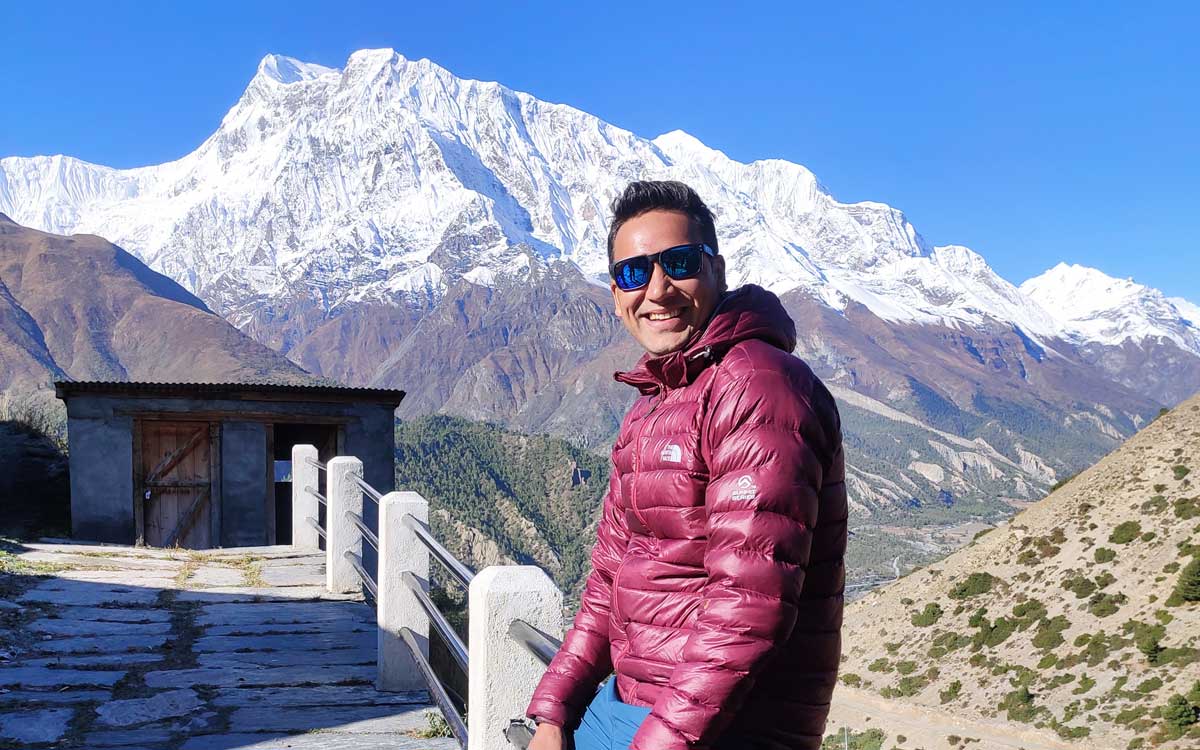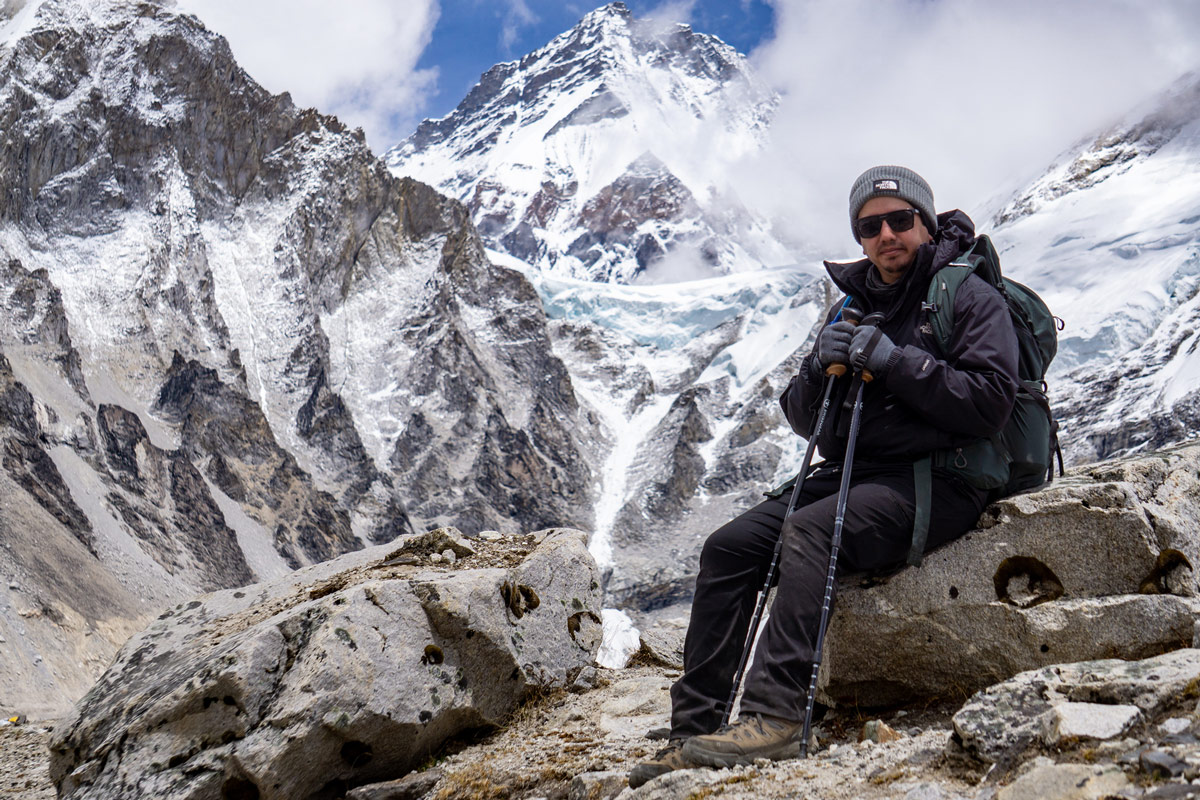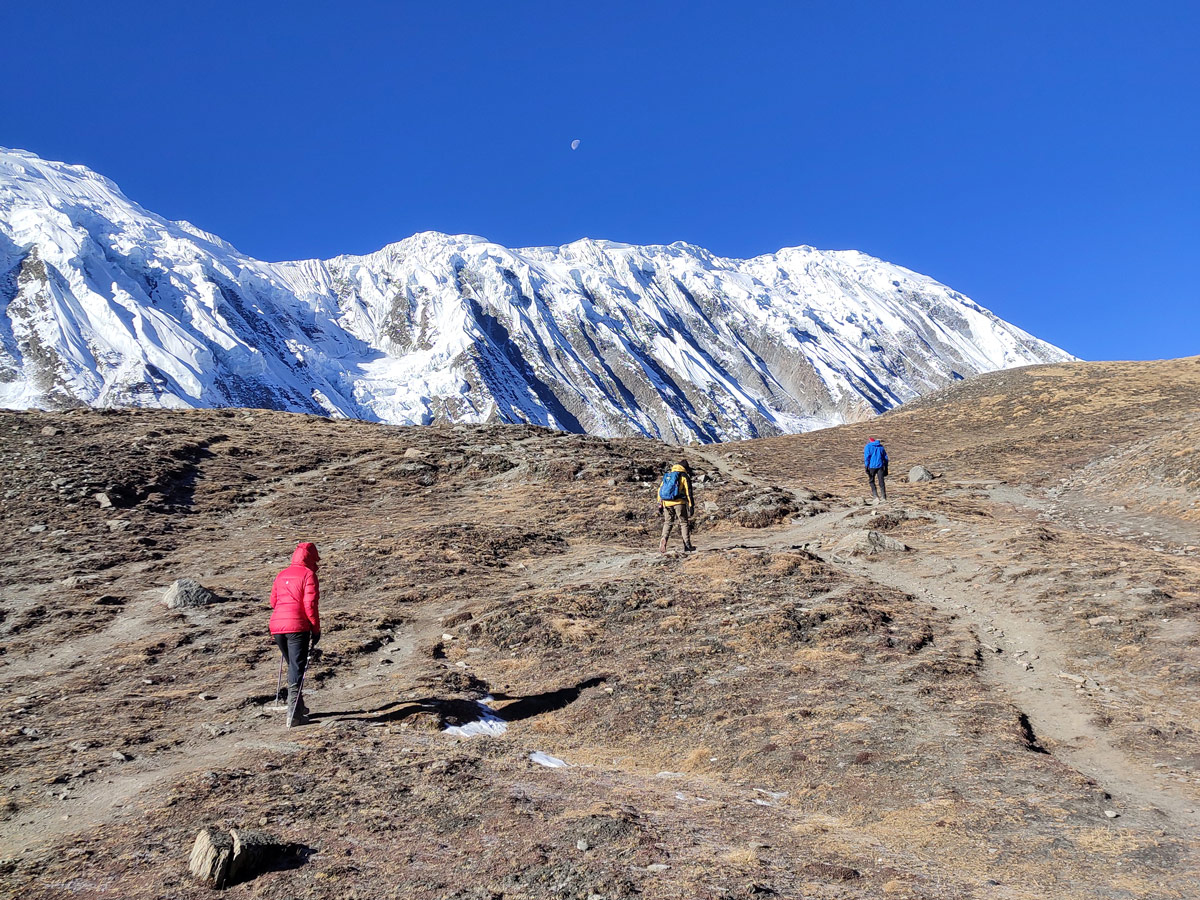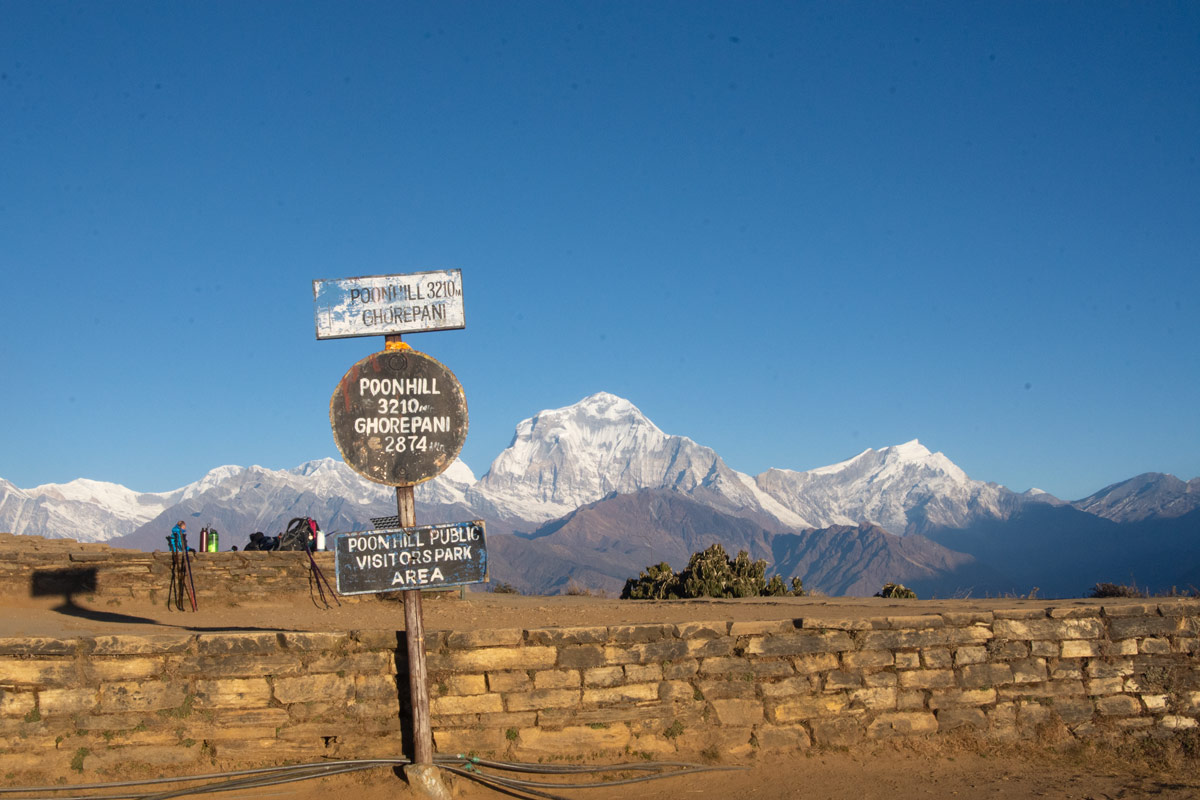Madan Kandel, the best guide of the year- 2016 works as the main guide in Ace the Himalaya. He has been the member of Ace family since 2011. His work at Ace has been tremendously appreciated by all our clients thus being one of the highly demanded guide for the treks. His work, his innocence, his seriousness and his happy – go – lucky nature, all at the same time is what makes him unique at work.
He says, “I’m lucky to be a part of one of the best travel and trekking companies of Nepal and live the life that I always wanted to live. All my life, I’ve been passionate about traveling to new places, exploring them and enjoying the nature to the fullest and this is exactly what I do with Ace, that too with many friends I make in every other trek”.

We managed to ask a few questions briefly during his peak hours about his experiences and his work at Ace. Here’s what he has to share with us.
What is a normal day like for you on a trek? “A day in the life of a guide”
Well, I start my day early in the morning at 5 with some exercises and stretching. The morning time from 5 to 7 is my time that no one gets to invade. I enjoy those 2 hours with myself to relax my body and prepare for the whole day.
Then at 7, I meet my clients for breakfast, do some briefing for the day about the sites that we will visit, the trail we will walk through and give them the rough estimate about how tough or easy the walk is going to be. Then at around 8 or 8:30 in the morning, we start the trek.
The rest of the day goes as planned. I try to make the trail easier by cracking some jokes time and again, taking rest every half an hour, clicking pictures, drinking lots of water, telling stories and many more. I try my best to keep the vibes positive no matter how difficult the situation might be.
The day then ends pretty well with some good food, some laughter, some stories to share followed by a good night sleep. That’s how my day during the trek looks like.

What is your favorite trekking route?
I am fond of Everest Base Camp trekking route. If you ask me why, I’ll tell you that I am such a person who loves challenges. And the challenge in the EBC trekking route begins from Kathmandu Airport itself.
The takeoff at Kathmandu may not be as scary as the landing at Lukla airport. I’ve flown over the Kathmandu-Lukla flight for 100’s of times by now, but the chill it gives every time down my spine is something I can never be used to with. The EBC trail demands a walk of 10 to 20 KM with the increase in elevation of 500-600 m per day which is pretty tough especially with the thinning of the air.

The trail looks pretty easy but it’s quite an adventure and a once in a lifetime experience especially for the first timers. The adventure, the challenges, the risk and the peace of mind after completion is what I crave for and the craving is fulfilled by the EBC route.
What has been the most challenging moment for you as a guide?In the second trek from Ace, years back, I remember guiding an Australian boy of around 25 years of age. Our flight from Kathmandu to Lukla for EBC trek was already fixed with the airlines. However, my client was too afraid to fly to Lukla knowing that the airport falls under one of the technical and dangerous airports in the world. Thus he opted to take a drive to Jiri to start the trek from there. It took us 6 complete days to reach Lukla.
We started the trek from Lukla as per plan. On the day we reached Lobuche, the boy said he had mild headache and wanted to rest for some time. Though sleeping is not recommended when the slight effect of increasing altitude is noticed, I allowed him to rest for some time.
I went after an hour, called him out the room to which he responded “I’m okay, I’ll be out in 5 minutes”. I patiently waited for few minutes and noticing he did not appear as told, I went in to check up on him. To my horror, he had lost his sight and said he could not see anything.
It was 5 in the evening, there were no hospitals around and no helicopters I could call for at that hour. So with the help of my porters, we carried him on our shoulders down to Pheriche hospital where they were unable to treat him. We had to wait for the next morning to call up for the helicopters.
We didn’t sleep the whole night and the earliest morning, he was flown over to Ciwec hospital, Kathmandu. After treatments and getting him hospitalized for 2 days, it was a relief to know that he gained his sight back. If we had lost few more hours along the process, he would have lost his eye-sight forever.
This has been one of the most horrific and challenging experience of mine throughout my working career.
What is it like working for Ace?
To be very honest, working with ACE has given me a sense of freedom. In previous companies I worked with, we were pressurized in many things. The briefing was done wholly by the guides. We were made responsible for any mistakes or the bad response from the clients. The maximum trekking I used to do were around 4 to 5 in a year. The rest of the time was free and without work. I was neither happy nor satisfied.
With Ace, things are different. The briefing is done by the operation team themselves and everything is made clear to the clients before departure. The best thing here is the working environment. The staffs are good, helpful and the work is well appreciated.

I get to showcase my capabilities and my work has not only been appreciated, but I have been awarded by the company as well. Working in one of the best companies in Nepal was already enough to which being awarded adds the cherry on the cake. I get to work the whole year, 12-15 treks a year and there is very little spare time.
The best thing here is that every staff from the MD to the management staffs and the guides, all are very hardworking which is what impressed me a lot. All in all, I’m happy and most satisfied to be a part of Ace family.
Did the earthquake affect your work?
It did actually as the number of tourists visiting Nepal declined sharply. The booked trips were all cancelled. It took a lot for us and the company to ensure that Nepal was okay and safe to travel to. My work got affected to that extent that I had to think about an alternative job for the daily living cost of my family.
It took a year for everything to go back to normal and the work resumed after that. Thinking about it now, I had a difficult time the whole year due to the earthquake and the aftershocks.
What do you like the most about guiding?
The passion of traveling to a new place grew from my childhood days. Whenever I had free time or was in holidays, I used to gather my friends and leave for exploration of the forests, the hills, the caves and many more. I have always enjoyed our snow capped mountains, the glaciers, undulating landscapes and what not.
It always feels good to show-off the things you like, praise about the things you are gifted with to others. I get to tell my clients about the festivals we celebrate, our diversified culture and also learn much about theirs. These are few things that I like the most about guiding.
What is your most impressive climb until now?
I trekked down to Namche Bazaar from Gorkashep in 8 hours. It usually takes 16-17 hours to reach Namche and is a two day trek according to the itinerary. There was some emergency situation so I had to be back sooner.

I wasn’t sure if I could make it down to Namche in such a short span of time. However, with the completion of the trek in around 8 hours, I was relieved. Thus I think this is the most impressive climb in my guiding career so far.
Tell us something about your family.
Well, I originally come from Dhading district. I belong to a small family with my parents, my wife and my 8 year old son. My parents still live in Dhading whereas my wife and son are together with me at Kathmandu. That’s it about my family.

This was what Madan had to share about his experiences, his work, his mountain stories and memories as a trekking guide. We wish him more success in years to come and appreciate him for being part of the Ace family.





